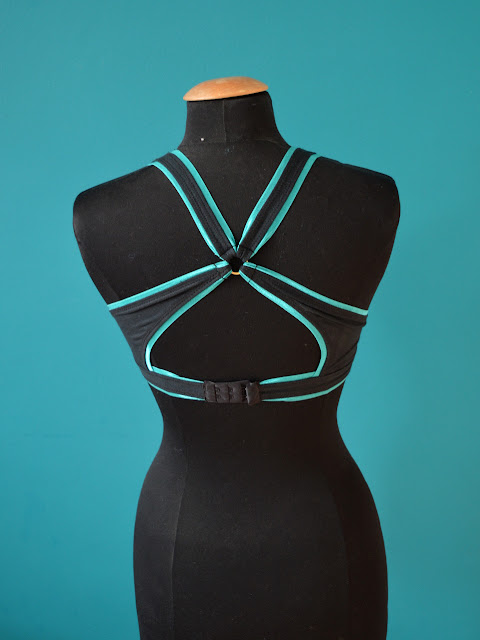I’ve been sewing most of my own clothes and blogging about it for about 13 years now. I had
my daughter seven years ago, and then a little boy a few years after that.
I LOVE sewing clothes for them, as well as for me, and although sewing processes are the
same, no matter the size of the garment, I find that the rewards are slightly different.
Sewing Satisfaction
Watching your kids running around and playing, completely care-free, whilst wearing clothes
that you’ve made, is a really wonderful feeling. I’m not exactly sure why it brings so much
satisfaction and joy, but it does.
The kids don’t even need to be your own. I’ve received just as much satisfaction from
making something for someone else’s child, as long as the garment was appreciated and
actually worn.
Making, Re-using, Recycling
These days, it’s very unlikely that those of us with kids who like to sew for them will make
all of our children’s clothes. My children have always been dressed in a combination of hand-
me-downs, charity shop finds and mum-made garments.
There are times when you fall into the slipstream of another family with an older child, and
the hand-me-down clothes flow steadily in your child’s direction.
However, when that flow slows down or dries up, and gaps in your child’s wardrobe appear,
adding some handmade items can be really pleasing.
Advantages of Knit Fabrics
Most of the garments I make for my children are from knit fabrics. Comfort and lack of
restriction are my priorities when it comes to their clothing.
Luckily, the kids’ garments that receive the most use/abuse, and are therefore harder to come
by second-hand (I’m looking at you T-shirts, leggings, joggers) take relatively little time and
energy to sew.
I love that there are so many fantastic, fun prints available on kid-friendly base cloths such as
Jersey, French Terry and Sweatshirting.
With a handful of tried-and-tested basic patterns in your arsenal, you can whip up a fabulous-
looking new garment in the space of a nap time or evening.
And if, like me, your sewing budget is limited and/or you like to consider the environmental
impact of buying new fabric, it’s good to remember that a little can go a long way.
Combining fun printed fabrics with plain/solid fabric within the same project can give a
really cool, unique finished item.
I also often harvest fabric from unwanted adult garments and use up my leftover jersey from
other sewing projects when making kid’s clothes too.
Home-sewn vs Shop Bought
Unlike for previous generations, affordable, mass-produced, children’s clothes are easy to
come by these days. But I invariably find that my handmade contributions, made with care
from good quality fabric, tend to look better for longer.
The fabrics I use don’t rapidly become brittle and scratchy, or start to pill as quickly. Neither
do the colours fade after just a couple of washes. My home-sewn leg and sleeve seams don’t
twist as readily as their factory-made counterparts tend to either.
Sizing and Fit
And whilst we’re on the topic of comparing shop-bought to handmade, I can’t avoid
mentioning sizing.
My experiences of mass-manufactured kids’ clothes sizing range from confusing to
maddening. What is written on the label frequently bears little resemblance to the actual size
the garment will fit.
Many garment manufacturers seem set on labelling all their products at least one size smaller
than they actually are, and who has the strength or patience to get their kid to try something
on before buying it?!
When we make clothes for our kids, we can take their measurements in the comfort of our
own home (when they are distracted by Peppa Pig perhaps).
By comparing their measurements to the pattern size charts, we have a much clearer idea of
how that garment is going to fit.
Custom Fitting
Plus once we have their measurements, we can easily combine sizes as necessary for a
custom fit, just as so many adult-garment sewers have to.
For those dressing children with a skinnier or stockier frame than the ‘average’, this can be a
game changer.
When my daughter was a toddler, she was very long and thin. I was able to combine different
sizes for the width and length, thus making her leggings and joggers that both fit properly at
the waist and reached her ankles AT THE SAME TIME.
Developing Personal Style
My final and favourite reason for sewing my children’s clothing is so I can make things that
align with my children’s personalities and preferences.
For my four-year-old son, that currently means just keeping the fabric within the orange-and-
red spectrum.
However, my seven-year-old daughter already has VERY clear ideas on personal style. These
days, garment projects for her are more of a collaborative effort.
While I must admit that relinquishing complete control of the decisions was hard at first, I am
the first to acknowledge the benefits of bringing kids on-board.
For one, garments are less likely to be rejected when kids get a say in what we make for
them. And secondly, by allowing them choice in the way their clothes turn out, we are
helping them to see themselves as designers, not merely consumers.
I hope that by the time my children become adults, they will be finding fun, escapism, joy
and value in the process of making, whatever form that takes… although sewing is best!



















